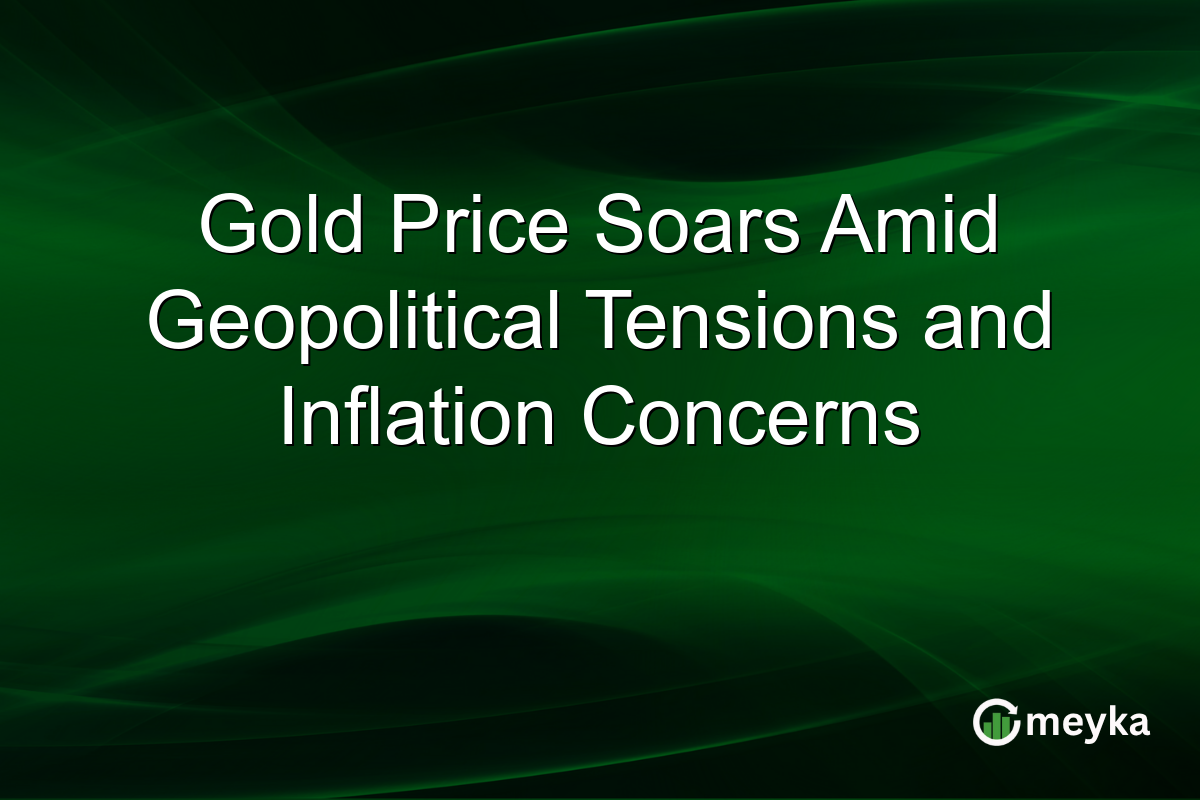Gold Price Soars Amid Geopolitical Tensions and Inflation Concerns
We are witnessing a dramatic rise in the gold price this year, driven by a confluence of inflation fears, weak real yields, and geopolitical turmoil. Spot gold recently topped $4,300 per ounce, registering the sharpest weekly advance since December 2008. This surge positions gold as not just a commodity but a key hedge for investors navigating uncertainty. See what’s driving the rally, analyze the technical and structural factors influencing the gold price, and outline considerations for investors in terms of portfolio positioning.
Inflation, Real Yields and the Gold Price
Lower interest rates and higher inflation
The gold price tends to rise when real interest rates fall and inflation remains elevated. Analysts note that in 2025, inflation concerns and the expectation of future rate cuts by the Federal Reserve have significantly boosted gold’s appeal. For example, when real yields drop, the opportunity cost of holding non-yielding assets like gold diminishes. This dynamic underpins much of the gold price strength today. For investors, this means that monitoring real yields and inflation data (such as the US CPI) is crucial ahead of further gold moves.
Inflation hedge credentials
The recent surge in the gold price reinforces gold’s role as a hedge against inflation and currency debasement. According to research, uncertainty and inflation were major drivers of gold’s 2025 rally, accounting for nearly half the increase in its price. Looking ahead, as long as inflation remains sticky and central banks remain accommodative, the gold price may continue to benefit.
Geopolitical Tensions and Safe-Haven Demand
Central bank buying and de-dollarisation
The gold price has been supported by strong demand from sovereign institutions. For instance, the Reserve Bank of India has seen its gold reserves rise to US $102.365 billion, as of October 10 2025, with gold accounting for 14.7 % of its foreign-exchange reserves. This shift reflects broader trends of de-dollarisation and reserve diversification, which bolster gold’s structural demand and support the gold price beyond mere speculative flows.
Global risks amplify demand
Recent geopolitical flash-points, trade tensions between the US and China, sanctions regimes, and global banking sector fears have reinforced gold’s safe-haven status. The gold price now sits at record highs partly because investors are reallocating toward assets less correlated with equities and bonds. This indicates that in times of heightened uncertainty, the gold price tends to accelerate, suggesting that investors may view bullion as a defensive complement to riskier assets.
Technical Momentum and Forecasts for the Gold Price
Momentum conditions
The gold price has crossed key technical thresholds. Spot gold recently peaked at approximately $4,378.69 per ounce, up about 8 % for the week. Moreover, analysts caution that technical momentum (e.g., RSI readings around 88) suggests the gold price may be somewhat overbought. As a result, short-term consolidation is possible. For investors, this means that while the gold price remains elevated, the window for aggressive upside may be narrowing.
Forecasts and investor implications
Major banks are raising their outlooks for the gold price. For example, HSBC revised its 2025 average forecast to US $3,455/oz and 2026 average to US $4,600/oz, while Bank of America expects the gold price to reach as high as US $5,000/oz by 2026. This tells us that while the gold price has already shown strong gains, many firms believe further upside remains, albeit with increased risk of correction. For investors, setting stop-loss or hedging strategies can help mitigate downside risk.
Investor Reaction / Market Sentiment
Investor sentiment around the gold price is decidedly bullish, with flows into gold-backed ETFs and central bank purchases validating the trend. On social media, bullish commentary is widespread:
At the same time, expert caution is building: analysts in India suggest the gold price rally could face headwinds if geopolitical tensions ease or rate-cut expectations shift.
The takeaway: sentiment supports the gold price rally, but vigilance on turning points remains vital.
Conclusion
In summary, the gold price surge reflects a powerful blend of inflation pressures, weak real yields, and heightened geopolitical risk. While technical momentum is strong and forecasts remain bullish, the near-term risks of consolidation or correction are real. For investors, gold should serve as a strategic diversification tool rather than the main portfolio anchor. A moderate allocation for instance, 5-15 % of portfolio value—via ETFs or physical gold, entered on dips, may be prudent. As always, monitoring macro signals, managing risk and aligning with one’s time horizon matter most for navigating the gold price landscape.
FAQs
Forecasts suggest the gold price may reach US$5,000 per ounce by 2026, though risks of a correction mean further rises are not guaranteed.
The gold price is rising because real yields are low, inflation remains elevated, and geopolitical uncertainties are driving safe-haven demand for gold.
It depends on your goals: physical gold offers tangible ownership while ETFs provide liquidity. Either can work when aligning with your portfolio and cost considerations.
Many analysts suggest a moderate allocation around 5-15 % to gold, depending on your risk tolerance and investment time horizon, to hedge rather than dominate the portfolio.
Disclaimer:
This is for information only, not financial advice. Always do your research.






